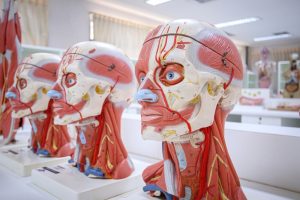A stroke is a medical condition where the blood supply to parts of the brain is interrupted or reduced, resulting in a lack of oxygen supply to brain cells. It is a medical emergency that requires prompt treatment. The overall incidence of stroke in Asia varies between 116 to 483 per 100 000 people annually. Mortality rates and stroke burden range from a low of 43.3 per 100 000 person per year (burden 706.6/100 000 people) in Japan and Singapore, 47.9 per 100 000 person per year (burden 804.2/100 000 people) to the highest being in Indonesia 193.3 per 100 000 person per year (burden 3382.2/100 000 people) and Mongolia 222.6 per 100 000 person per year (burden 4409.8/100 000 people).
In our previous article, we have discussed the common symptoms of stroke, which include weakness in one side of the body, confusion, trouble talking, sudden headaches, or loss of balance. Click on the link to find out more about the causes and risk factors!
In the second part of the 2-part series discussing stroke, we take a look at how physicians manage stroke: the diagnosis, management and also the various rehabilitation options for stroke patients.
How to Diagnose A Stroke?
When a patient first arrives at the emergency department suffering from a suspected stroke, the following diagnostic tests may be carried out:
- Physical examination: the doctor will auscultate the heart and check the individuals’ blood pressure. A neurological examination will also be performed in which the patient will be asked to follow simple instructions (like opening and closing the eyes, walking in a straight line etc).
- Blood tests: multiple blood tests will be needed to check for any abnormalities (especially the clotting factors).
- Computerized tomography (CT) scan: a CT scan utilises X-rays to create images of brain layers that can indicate bleeding, tumours or other conditions.
- Magnetic resonance imaging (MRI): a MRI utilises radio waves to create images of the brain in order for doctors to see areas damaged by the stroke, and brain haemorrhages.
- Carotid ultrasound scan: a carotid ultrasound scan utilises sound waves to create an image of the inside of the blood vessels in the neck. It specifically detects narrowing or blockages in the neck arteries leading to the brain.
How to Treat A Stroke?
Treatment depends on the type of stroke and can be categorized into the following groups:
1. Ischemic stroke
This is the most common type of stroke. It is caused by the narrowing or complete blockage of a major artery supplying brain tissue, causing a reduction in blood supply. Treatment aims to re-establish normal blood flow.
- Emergency intravenous medication: giving drugs to quickly break up the blood clots.
- Emergency endovascular procedures: a catheter is inserted into the blocked artery to either expand the artery or remove the clot.
2. Haemorrhagic stroke
A hemorrhagic stroke happens when an artery in the brain breaks open and leaks blood to the surrounding brain tissues. The leakage places immense pressure on the skull and brain tissue. Treatment aims to remove the leaked blood as soon as possible.
- Surgery: drain the blood and relieve pressure on the patient’s brain.
- Emergency medication: use drugs to lower a patient’s brain pressure to prevent spasms of blood vessels.
Rehabilitation Options
Patients with stroke will most likely have long term complications, ranging from paralysis to problems with speech or vision. The rehabilitation process focuses on redeveloping the patients’ ability to live independently. Different patients with different types of strokes have completely different treatment options. These are some professionals you should consult for rehabilitation programmes:
- Neurologist
- Physiatrist
- Dietitian
- Occupational therapist
- Physiologist
- Psychologist









